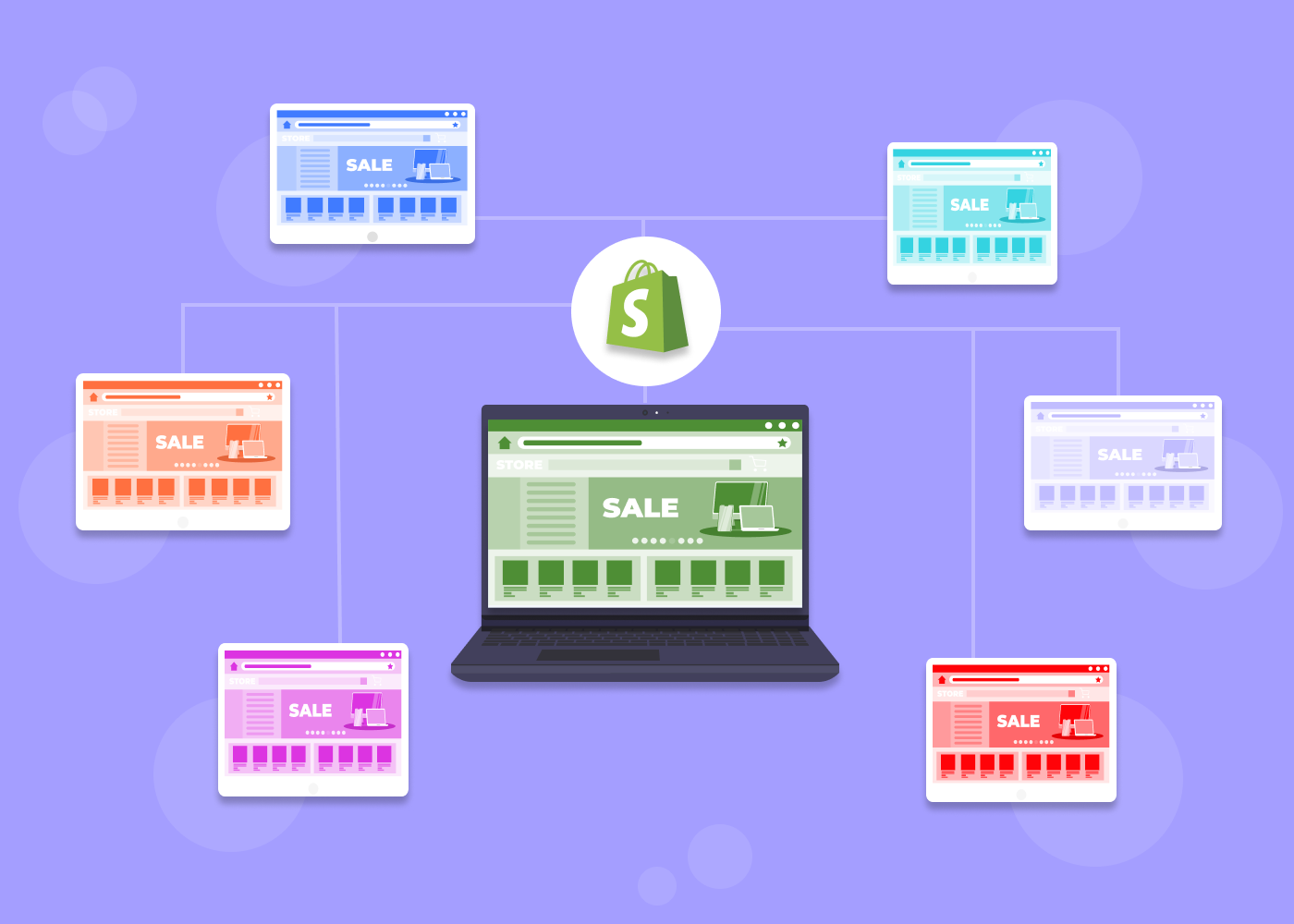Content
M-commerce vs E-commerce: What’s the Difference?

Time to read: 15 minutes
In the Ye Old Times of the pre-Internet era, people have probably never even imagined the possibility to buy any type of commodity not in their usual brick-and-mortar stores. Until 42 years ago, in the United Kingdom, the peculiar teleshopping invention of Michael Aldrich laid the foundations of future online shopping by adapting and connecting a standard TV to hardware through a telephone line to process incoming transactions and messages.
That same system has later jumpstarted the whole e-commerce evolution process that keeps getting more and more innovative and secure. And less than 20 years later, mobile commerce came into play as a vital subcategory of electronic commerce and its rightful heir. Since then, the m-commerce vs e-commerce discussions and comparisons became almost neverending.
Lets talk about itHave a project in mind?
We, too, will continue this discussion and help you differentiate the two and have a bit more understanding of what makes them so widespread and sought-after. Keep reading to also discover the advantages of electronic and mobile commerce and the most prominent examples.
What Is E-commerce?
Before we explain m-commerce in detail, let’s go through the basics of its predecessor - electronic commerce. We’ve already covered a bit of history, now’s the time for the rest. The first company that followed the idea of e-commerce was called Boston Computer Exchange which specialized in online selling pre-owned computers. Later, online selling of books would ensue - first, with Book Stacks Unlimited, and then, Amazon.
The evolution continued with the number of huge marketplaces entering the picture - eBay, Alibaba, Amazon Prime, as well as a handful of services designed to make online shopping an even more pleasant and effective experience. Among them were the first online payment systems, Google advertising solutions, and a few e-commerce platforms that now dominate the market entirely. But more on those platforms later on.
As you’ve probably figured out by now, e-commerce is a broad term for any company or business that sells its goods, whether those are physical items or services, via the Internet. Electronic commerce has a few types depending on what merchandise is being sold by what kind of seller and to which buyer.
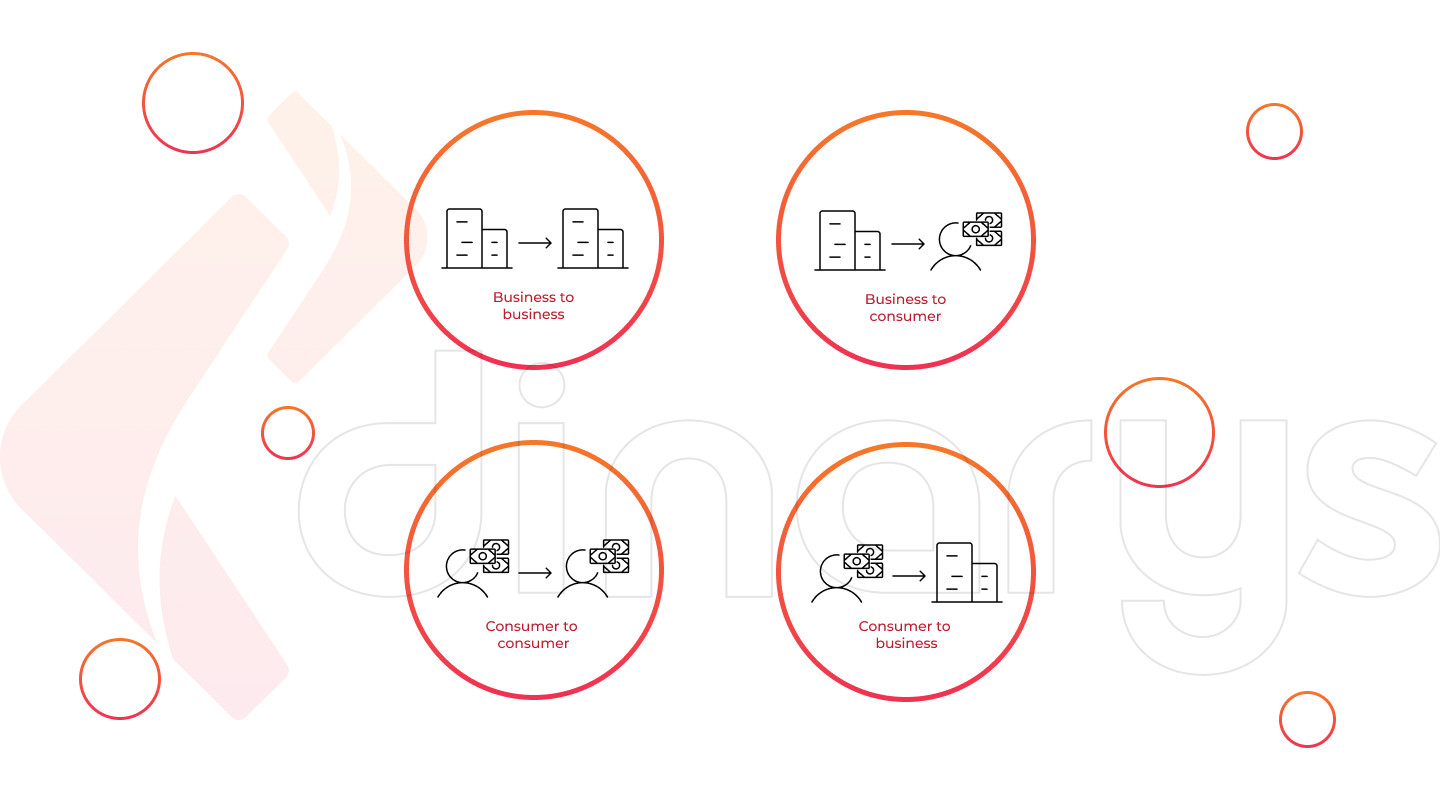
Business-to-customer (B2C) is the most common and extensive type of e-commerce and the first thing that pops into mind when thinking of online retail. Almost every person has purchased something from an online retailer at least once. The rest of the popular types are:
- B2B which covers transactions between businesses;
- C2C, that comprises of sales between consumers on various platforms;
- C2B - the reverse model of online transactions, where businesses buy from customers (for example, stock photos).
What Is M-commerce?

What is m-commerce, then? Naturally, with the popularization of smartphones and the abundance of all-encompassing mobile apps, mobile commerce has swiftly emerged to replace electronic commerce as the most convenient way to purchase products and services.
The layman’s m-commerce definition is not that far away from the m-commerce business definition, which is a part of e-commerce and refers to all transactions made on mobile devices, smartphones, and tablets. As of lately, any wearable and wireless devices capable of making purchases fit into that category as well.
The term “mobile commerce” originated in 1997, when Kevin Duffey offered the conference at the Global Mobile Commerce Forum its definition as the electronic commerce capabilities being universally delivered directly to people using wireless technology.
Mobile commerce turned out to be a huge step up from the previous ability to purchase and sell goods using only computers and laptops. The accessibility and comfort of wireless deals mean the growth of countless opportunities - from helping people who are unable to go to a physical store to getting rare products regardless of your whereabouts.
Multiple new industries have commenced following the spread of m-commerce, including:
- Mobile banking - the first mobile top-ups using the ATM began in 2004, with the development of the mobile phone banking service coming a few years later, in 2007;
- Wireless boarding passes and tickets - for example, the 2006 London concert of the American band Guns N' Roses was completely ticketless, which sparked quite a bit of interest at that time;
- Contactless payments and mobile money transfers - the first country to start mobile transfers was Kenya by launching M-Pesa in 2007.
E-commerce and m-commerce difference
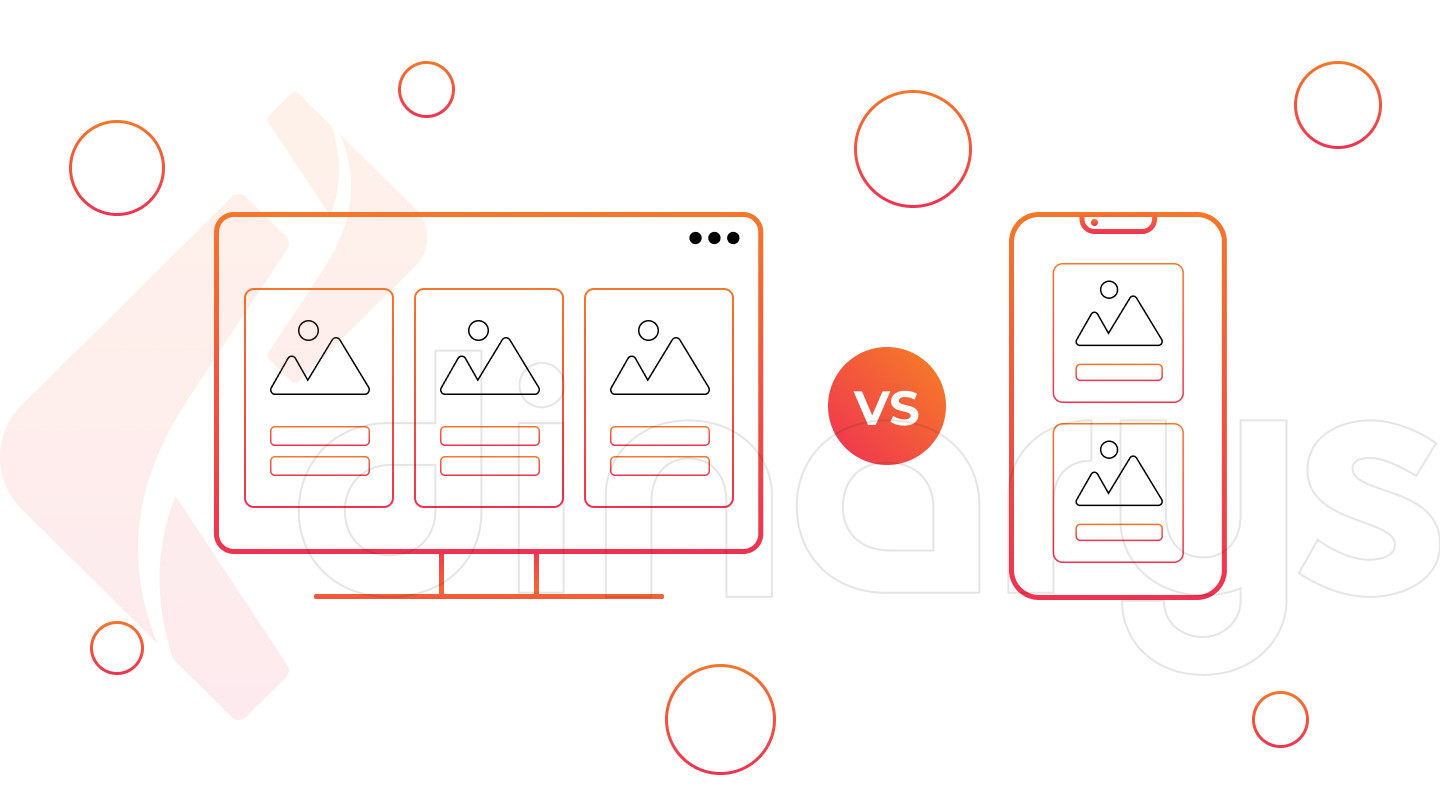
Even with loads of similarities and common goals that come with being practically the same category of shopping, electronic and mobile commerce are not equivalents. The first is a superset, the latter - subset.
The main difference between e-commerce and m-commerce is the choice of devices for shopping activities. M-commerce has offered the “sell and shop on the go” concept to the whole e-commerce variety. While electronic commerce covers all Internet transactions, mobile focuses only on those devices that we carry with us at all times. Prior to that, people had to be more stationary for any e-commerce activities.
The next major e-commerce and m-commerce difference is the necessity of Internet access. While both use the Internet connection, mobile commerce relies heavily on wireless connectivity, therefore the actual usage of the Internet is not obligatory, especially in the case of Progressive Web Apps that can cache offline data if needed.
Here are some of the less apparent differences:
- E-commerce uses web stores, while m-commerce employs web apps, native apps, or hybrids;
- M-commerce doesn’t have that limitation on mobility and accessibility that accompanies shopping with computers and laptops;
- Mobile commerce has more customization for each user as a result of using apps, while e-commerce doesn’t always have that possibility;
- E-commerce offers a more extensive list of functionalities since it doesn’t have to worry about mobile performance and optimization.
Role of E-commerce and M-commerce
The importance of e-commerce and m-commerce at times of increased global consumption of goods is truly undeniable. And it’s not just about selling products. As we’ve established, without electronic commerce, there wouldn’t be even any online payment systems, to begin with.
Mobile commerce, on the other hand, is the next-generation form of commerce, which shouldn’t be perceived as a replacement, or even worse, a limited version of e-commerce. Its unique set of benefits and offerings places m-commerce as one of the best ways of communicating with consumers, which is the primary role of e-commerce and m-commerce.
M-commerce plays various roles and has different meanings for different people. For some, it’s just an extension of electronic merchandising to smartphones, while others think of it as a whole new channel. It’s hard to miss the commercial value of online shopping that grew tenfold since moving to wireless devices.
Consequently, online commerce resulted in the whole merchandising realm in the palm of our hands. With each year, the contributions of electronic commerce are becoming more prevalent. Let’s see what statistics have to say about it.
M-commerce vs e-commerce statistics

The global e-commerce market is growing so swiftly that the 2020 pandemic wasn’t even a hindrance, which is understandable considering how much time people had on their hands. Boredom was always a friend of online shopping - online sales increased 27.6% in just one year and reached over $4 trillion.
M-commerce vs e-commerce statistics has also shown a steady process of mobile commerce dominance. As you can see in the picture below, over the last five years, the share of m-commerce grew 14% and became almost 73% of the total amount spent on online purchases.

Let’s also take a look at the top companies operating in business-to-customer e-commerce, based on their gross merchandise volume over the last three years. The first companies that started online commerce and paved the way for the rest of businesses - Alibaba, Amazon, eBay - still remain leaders in their industries.

Here’s some more interesting statistical information regarding m-commerce:
- 75% of consumers prefer mobile shopping because it’s more efficient and time-saving;
- While shopping in physical stores, 80% of customers used their mobile devices to compare prices, read reviews, or search for other stores’ locations;
- In 2021, 3.8 Billion people worldwide own at least one mobile phone, which is more than 48%;
- Last year, the United States received $339 billion in revenue all thanks to mobile commerce.
Advantages and Disadvantages of E-commerce and M-commerce
Let’s start with why e-commerce has proven to be so valuable, and then follow with some advantages of m-commerce over e-commerce. Shopping over the Internet saves time for those who work most of the day during standard retail hours and don’t have time to buy groceries and utilities.
Lets talk about itHave a project in mind?
E-commerce has also been instrumental in helping small businesses better reach their customers. Many lesser-known or niche companies struggle to find their audience at the beginning or choose a marketing approach, thus switching to online commerce actually assists in expanding their reach to new markets and regions.
Another advantage presents in reducing operating costs since companies don’t have to maintain brick-and-mortar stores, which in turn means lower prices for customers. The overall experience of online retail has gotten more personalized as well. Shoppers can receive recommendations based on their previous purchases and receive as much individualized treatment as possible.
The disadvantages of e-commerce include reduced personal interaction with other people since all transactions are made over the screen, occasional technology malfunctions, and lack of physical testing and inspection of products before purchasing.
Among the numerous benefits of m-commerce, we can single out a few most prominent that show its more accommodating nature compared to e-commerce:
- A better user experience that comes with loads of new solutions for M-commerce that have been presented over the last few years - chatbots, augmented reality, personal digital assistants, etc;
- Omnichannel retail - the ability to sell through multiple routes, including physical stores, online platforms, marketplaces, native applications, and social media;
- A wide range of online and mobile payment options - browser-based, in-app systems, mobile wallets, wireless card readers, and magnetic secure transmission payments.
The M-commerce disadvantages involve all the limitations that come with using a smartphone instead of a computer - data navigation, screen size, wonky Internet connection, and security issues of certain networks if you shop from unfamiliar places.
E-commerce and M-commerce Examples
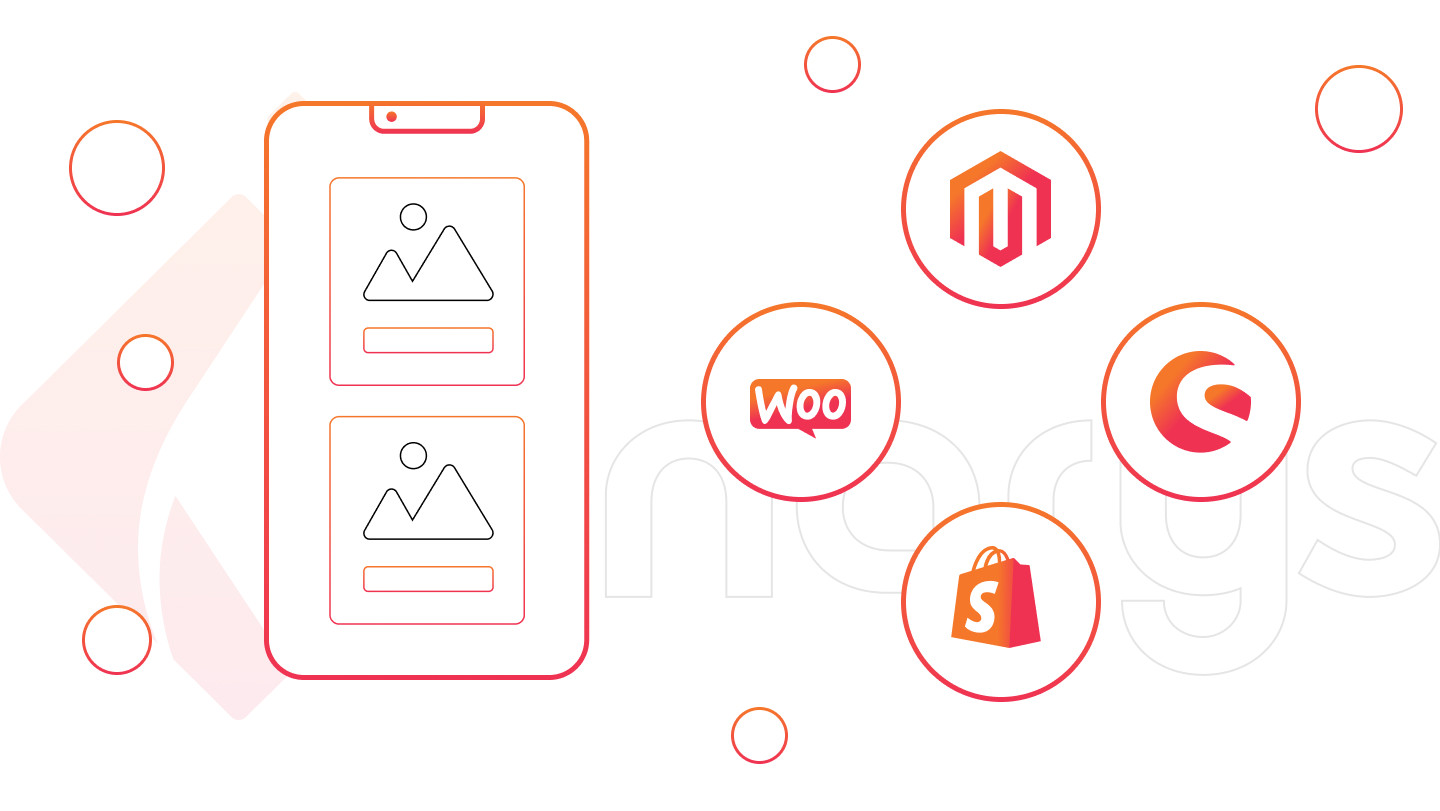
Popular examples of e-commerce include online retailers, marketplaces, auctions, crowdfunding platforms, travel websites for bookings, streaming services, online renting services, Software-as-a-Service solutions, e-books, cloud platforms, and many more. Here are some of the largest electronic commerce solutions:
- Amazon - one of the first and largest platforms for online retail;
- eBay - specializes in C2C and B2C commerce;
- Flipkart - Indian online megastore;
- OLX - online marketplace with miscellaneous listings;
- Fiverr - marketplace for freelancers.
Quite famous solutions have been and still are ready e-commerce platforms for smooth and relatively effortless store-building that are quite configurable, flexible, and have lots of themes that can help style your store however you like. Based on our experience, our team can recommend two of those platforms - Magento and Shopware. There are also a couple of nice ones, including WooCommerce, Shopify and BigCommerce headless.
M-commerce examples include Amazon mobile app, Starbucks app, Uber application, Mobile banking apps (for example, Apple Pay, Android Pay, Google Pay, and Samsung Pay), Sephora (a beauty products retailer), etc.
Aside from professional platforms that can be customized based on your store, a lot of businesses choose to have their own individual solutions to meet their specific needs. For example, our team at Dinarys developed a marketplace for auction houses to provide a bunch of ex-auction-house professionals an opportunity to sell various items to collectors and auction devotees.
E-commerce Trends
Any industry that’s prone to rapid changes is affected by trends it itself has created. By consciously evolving, e-commerce shows it can adapt to any socio-economic, political, ecological, and technological challenges that appear each year.
The most recent challenge, for example, was and still remains, the COVID pandemic and its limitations on physical shopping. To stay up-to-date, here’s the list of the most prominent e-commerce trends of 2021 you can try for your business.
Marketplaces
Customers have recently become increasingly accustomed to buying every single item in one place. Especially during the pandemic, the possibility to get multiple types of products - from homeware to clothing - from one marketplace, instead of ordering from different retailers, is highly convenient and effective. You don’t have to pay for several deliveries, plus marketplaces usually offer loads of different bonuses and a perpetual array of discounts.
Although, it doesn’t mean that every e-commerce business should terminate their website and transfer all their merchandise into a whole new marketplace, giving it a try can be rather fruitful. While serving as another channel for your business, it can also act as an additional marketing strategy and lead customers back to your own website.
Rapid customer research

Based on this article, more and more companies will attempt to conduct rapid customer research to keep up with fast-changing customer needs and preferences. Each time, shoppers expect more innovative decisions from e-commerce, since they’re used to seeing it in other industries.
Particularly during peak shopping seasons, when retailers have to act fast, the only thing left is to run a quick user research, instead of resolving to a guessing game. This type of research is called rapid because it’s implemented in mere days, rather than weeks or even months. It’s a great way to test campaigns or new strategies.
Augmented reality
Now we’re getting techier. Serving as a sprinkle of futuristic allure, augmented reality gets featured in almost every article about trends. While it is trendy, pun intended, AR is decidedly set on transforming the whole e-commerce industry as we see it. Arguably, the most frustrating issue while buying online is the inability to fully see an item before the purchase.
Augmented reality can set our shopping experience to a whole new level. An application can help deliver a sensory experience close to what we’re familiar with in brick and mortar stores. You can try on an item of clothing, see a product more closely, or visualize how a piece of furniture will look and fit in in your living room.
Sustainability

Sustainability is not a new trend, but rather a continuous one since global warming and possible scarcity of resources in the future are not going anywhere. According to Facebook, 68% of Gen Z shoppers believe companies should contribute to society. To go even further, more than half states their willingness to pay more for a product if it was sustainably manufactured.
Sustainable manufacturing and commerce mean creating and selling products made of materials and with packaging not harmful to the environment and having such high quality that they will be able to last a long time. Those are items labeled as biodegradable, organic, plastic-free, durable, ethical, compostable, recycled, eco-friendly, reusable, etc.
Omnichannel selling
This marketing approach can help you even better reach your customers and provide a more personalized experience. The concept wraps around the idea that you can’t go far by using only one of a couple of channels in your marketing and selling.
Read also: Composable commerce migration as a way to efficient omnichannel selling
Customers now expect to see content on different platforms and be approached by retailers from different angles. Using the power of omnichannel selling means utilizing social media, previously mentioned marketplaces, mobile applications, your own website, as well as not forgetting about physical retail whenever possible.
Lets talk about itHave a project in mind?
Study what channels your existing clientele and your target audience frequent the most, and focus on those next. You can also use the cross-channel data you collected to offer your consumers even more personalized shopping with promotions, coupons, loyalty programs.
The Future of M-commerce
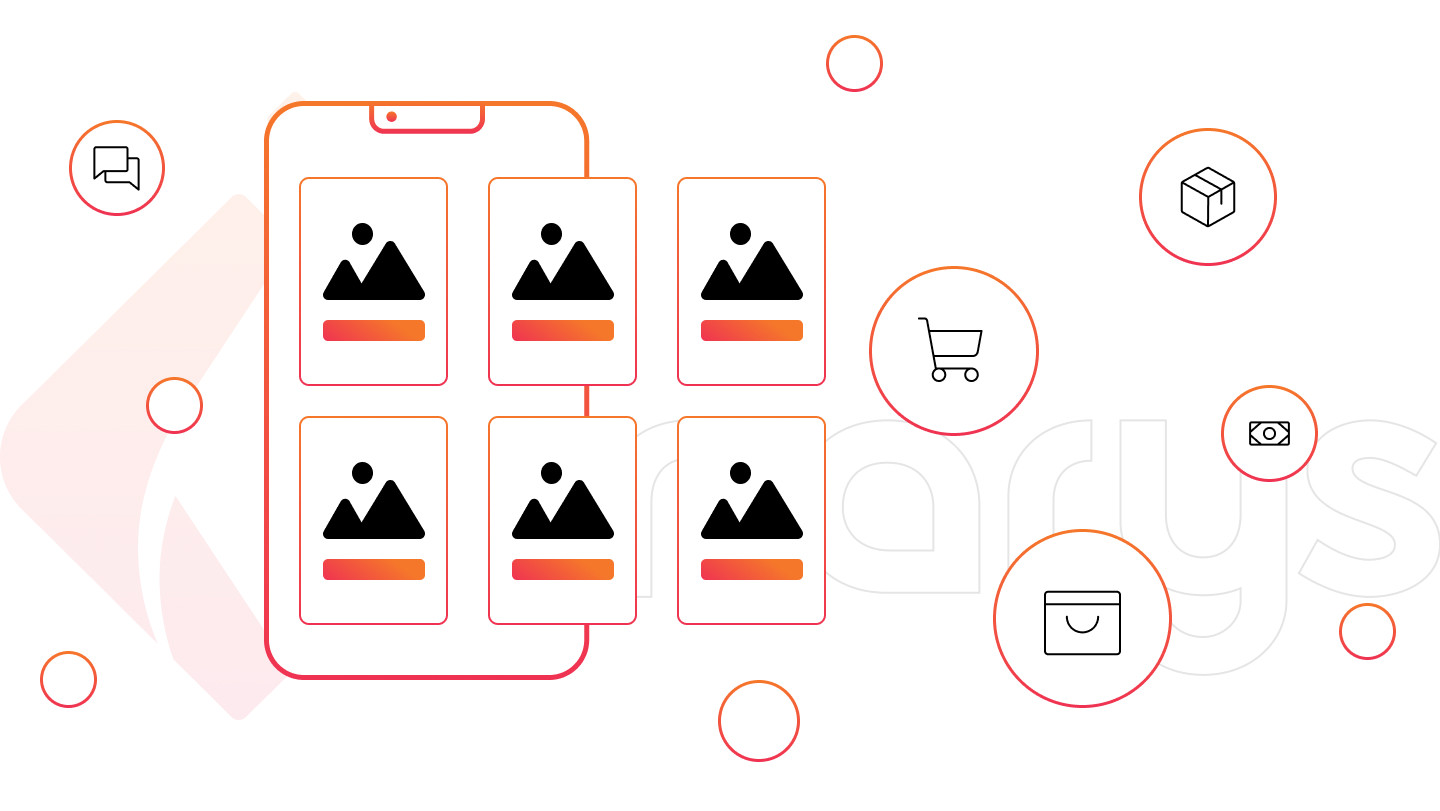
As a subcategory of e-commerce, mobile commerce also gets incredibly affected by fleeting fashion and various predictions of what’s to come. The preference for mobile over desktop has seeped through all stages of online shopping - from merely studying the market and comparing prices to already finishing the purchase by selecting a mobile payment.
Read also: Composable vs headless: Opportunities provided for mobile and electronic commerce
Nowadays, m-commerce growth is mostly affected by pandemic-driven everyday purchases, an increase in food deliveries due to regular and often extended isolation periods, bloggers, and celebrities-influenced buying decisions. Most of the trends we discussed in the previous chapter have also been affecting mobile commerce.
There are also some changes and trends specific to mobile commerce. The rise in the number of mobile phone users in the world is one of them. Even back in 2014, in a study by Accenture and Forrester, the findings indicated more than 56% of shoppers use their mobile phones even at home.
And now, the number of worldwide smartphone possessions is expected to grow by 25% each year over the next few years. The same goes even for simple browsing habits. The average amount of hours spent browsing on a mobile phone is almost three times higher than that of a desktop browsing.
Typical mobile commerce trends also include:
- Progressive Web Apps, which combine the functionality of native apps with compatibility of standard web applications. That way, businesses can minimize their expenses by not developing mobile apps that depend on different types of OS and whether it’s updated to the latest version. Instead, PWA’s are less expensive and more compatible.
- One-Click purchase. The long checkout process with all that tedious and recurrent entering of personal information can be a reason for shopping cart abandonment. By consensual storing of user’s personal data inside a mobile app, you can spare their time and offer a possibility of one-click orders.
- Social commerce. Social media purchases and transactions that originated from ads placed on “shoppable” posts and pages are still going strong. Soon, there will be even more chances to buy products without even leaving social sites.
Conclusion
With each year the process of starting your own online store gets easier which helps the rapid growth of the industry. Having learned the purpose, history, trends, and all the advantages and disadvantages of e-commerce and m-commerce, it’s safe to say that this industry is still evolving, and somehow finding even more ways to ensure our manifestations of consumerism.
On a final note, if you have any questions, suggestions, or, perhaps, some e- and m-commerce projects you want to be developed, click here to contact our team.
Lassen Sie Profis Ihre Herausforderung meistern
Unsere zertifizierten Spezialisten finden die optimale Lösung für Ihr Unternehmen.


